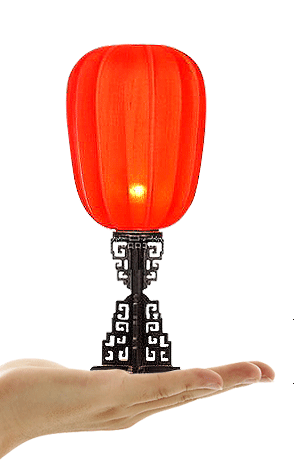Arrival - Tian’anmen Square - Temple of Heaven - Nanluoguxiang - Old city (Hutong)
Arrive in Beijing, meet your local guide in the airport, and transfer to the city center.
Tian’anmen Square: Located at the center of Beijing City, Tian’anmen Square is one of the largest city squares in the world. It was built in 1417 and was de entrance gate to the Forbidden City.
Temple of Heaven: It is a complex of Taoist buildings situated in the southeastern part of central Beijing. The complex was visited by the Emperors of the Ming and Qing dynasties for annual ceremonies of prayer to Heaven for good harvest.
Nanluoguxiang: Situated in Beijing Dongcheng district, near the Drum Tower. It’s one of the oldest hutongs and has a history of over 800 years. It is packed with bars, cafes, restaurants and shops selling souvenirs and traditional crafts.
Hutong with rickshaw: Promenade near Shichahai (also called Houhai), you can take a rickshaw during the visit. Because the narrow lanes, taxis could not enter into hutongs so rickshaw is one of the most welcome transportation method that bring you all the way to the discovery of old Beijing.
Lunch included: In Hancang Hakka Restaurant is located on the east bank of Shicha Hai Lake and has a traditional Chinese environment and culture. It serves the very popular cuisine of the Hakka minority group.
Itinéraire:

Forbidden City - Jingshan Park - Yonghe Lamasery Temple - Temple of Confucius
Forbidden City: We called “Gogong” in Chinese. For almost five hundred years, it served as the home of emperors and their households, as well as the ceremonial and political center of Chinese government. Since 1925, the Forbidden City has been under the charge of the Palace Museum, whose extensive collection of artwork and artifacts were built upon the imperial collections of the Ming and Qing dynasties.
Jingshan Park: A beautiful royal landscape garden. It is well worth the climb on a clear day for spectacular views of the Forbidden City and Beijing.
Yonghe Lamasery Temple: Also called Lama Temple, which is the largest and most perfectly preserved lamasery in present day China. Built initially in 1694 during the Qing Dynasty, this building was the residence of Emperor Yongzheng when he was just a prince.
Temple of Confucius: It is the second largest Confucian Temple in China, after the one in Confucius' hometown of Qufu, Shandong. The temple was built in 1302, and officials used it to pay their respects to Confucius until 1911.
Tea House: Take a rest in a Tea House. Chinese people are believed to have enjoyed tea drinking for more than 4,000 years. For a long time, tea was used as an herbal medicine. During the Western Zhou Dynasty, tea was a religious offering. During the Spring and Autumn Period, people ate fresh tea leaves as vegetables.
Lunch included: In Xuxiangzhai near the Lama Temple, this restaurant in Chinese style architecture always have many kinds of fresh vegetables and fruits ready and with them offer nearly 100 delicious dishes. It provides a variety of delicious vegetarian food as well as tea house.
Diner included: Have diner in a local family. The best chance to get close to the Chinese family and taste the home cooking.
Mutianyu Great Wall - Ming Tomb - Scared Road
Mutianyu Great Wall: The Great Wall is one of the greatest wonders of the world, was listed as a World Heritage by UNESCO in 1987, built originally to protect the northern borders of the Chinese Empire against intrusions by various nomadic groups. Mutianyu section is the longest fully restored Great Wall section which is open to the visitors. There are fewer touristes and more beautiful view than Badaling.
Ming Tomb-Zhaoling (with round way cable car): The site of the Ming Dynasty Imperial Tombs was carefully chosen according to Feng Shui (geomancy) principles. We’ll visit one of Ming Tombs-Zhaoling. Zhaoling Tomb takes up an area of 35000 square meters. It is the tomb where the twelfth emperor of the Ming Dynasty Zhu Zaihou and his three empresses were buried.
Scared Road: It’s part of the Ming Tombs complex. Alongside the Sacred Road are 18 pairs of marble figures lined up opposite each other, almost as if watching those passing by. These creatures include twelve pairs of animals such as lions, horses, elephants, camels, and other hulking beasts, and six pairs of human beings such as generals, and public officials.
Diner included: Beijing Roast Duck is a famous duck dish from Beijing that has been prepared since the imperial era, and is now considered one of China's national foods.
Olympic Village - Summer Palace - Diabolo Museum - Antiques Street Liulichang
Olympic Village: Stop at Water-Cube and the Bird’s Nest to take some photos, entrance fee not included.
Summer Palace: It’s called Yiheyuan in Chinese, means Garden of Nurtured Harmony. The largest and most well-preserved royal park in China. You could climb to the Tower of Buddhist Incense for a panoramic view of the area.
Diabolo Museum: A diabolo, also called Chinese Yoyo, formerly also known as "the devil on two sticks", is a juggling folk toy made of bamboo and wood. Beijing Diabolo Museum is the only one of its kind introducing diabolo culture in China. It has 3 exhibition rooms displaying the diabolo’s history, craftwork and technique.
Antiques Street Liulichang: It is a famous district in down-town Beijing that is known for a series of traditional Chinese stone dwellings housing selling various craftwork, artistry, and antiques. It is one of Beijing's traditional old quarters.
Night Show: Beijing Opera or Kung Fu Show.
Transfer to the airport or the railway station for the next destination.


 goback
goback
